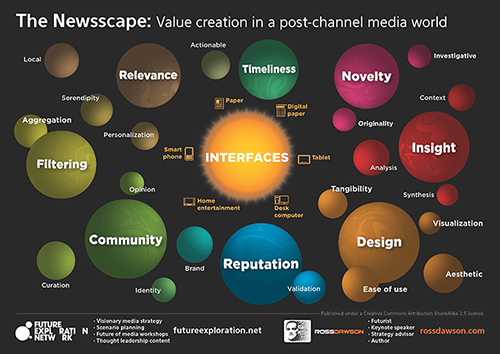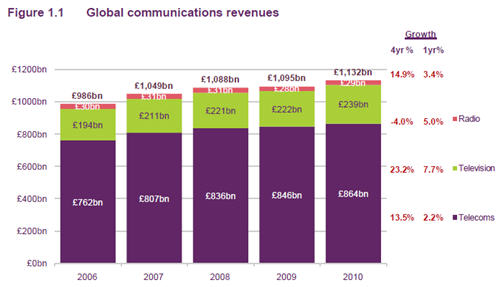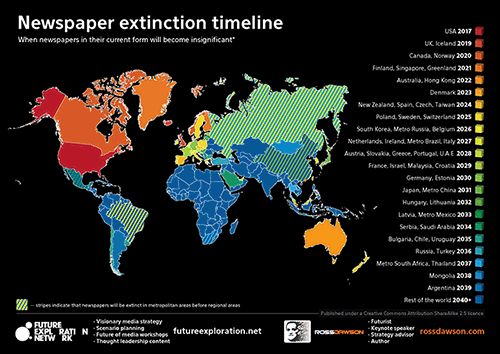As part of News Limited’s launch of its digital subscription plans that I wrote about earlier this week, News has just launched the site Future of Journalism, (subtitle: A Discussion Hosted by News Limited).
It includes videos, infographics (very clearly taking a cue from social media here!), and articles. The site says “We have gathered thoughts from some of the leading personnel at News Limited, and engaged a range of industry leading commentators to share their opinions,” so while they are hosting the discussion they are trying to make it far broader.
I suppose the implicit point of the site and discussion it is intended to engender is that for journalism to have a future, it needs to be paid for, so you should pay for their subscription plan.
I was asked to contribute to the site at short notice, so given my schedule I thought it made sense to share my NewsScape visual on where value resides in news today (and thus what you can get people to pay for), and managed to find time on an airplane flight to write a few notes on how this was relevant to journalism.
You can see my article on the Future of Journalism site, or here it is in below in full.
The Future of Journalism

Click on the image to see large version
Journalism has a rich future. In some ways it will be very similar to its rich and illustrious past. In others it will be very different, reflecting the current fragmentation and restructuring of the world of news. Among other shifts, journalism will encompass not just words, but also images, data, video, visualisations and more.
Read more →



